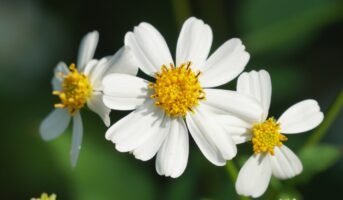Dactyloctenium aegyptium, also known as Crowfoot Grass, is a low-maintenance houseplant native to Africa and Asia. It’s an excellent plant for making your environment greener and more scenic.
Your backyard or lawn will be attention-grabbing with Dactyloctenium aegyptium as it is adaptable to any decor. Usually, People cultivate this plant on their farms and gardens. However, these fast-growing grass creeps have been grown primarily as attractive plants in the garden since ancient times. So, let’s discuss Dactyloctenium aegyptium benefits, exclusive characteristics, and how to nurture it in your yard.
Dactyloctenium Aegyptium- Important facts
| Name of species | Dactyloctenium aegyptium |
| Taxonomic tree | Domain: Eukaryota
Kingdom: Plantae Phylum: Spermatophyta Subphylum: Angiospermae Class: Monocotyledonae |
| Category | Houseplants, Annual, Grass, Herbaceous, Seed propagated, Vegetative propagated, |
| Family name | Poaceae (Gramineae) |
| Common name | Crowfoot grass, Coast button grass, Madana, Makra, Duck grass, Durban crowfoot, Egyptian finger grass, Egyptian grass, Finger comb grass, Four-finger grass |
| Division of the plant | Angiosperms (Seed Plants) |
| Mode of nutrition | Autotrophic |
| Preferred climate | Sub-Tropical / Monsoonal |
| Native habitat | Terrestrial (Secondary Rainforest, Grassland / Savanna/ Shrubland) |
| Desirable plant features | Ornamental Foliage, Ornamental Seeds |
| Landscape uses | Outdoor plant |
| Temperature | 50° to 80°F (10° to 27°C) |
| Blooming time | All the year round |
Overview of Dactyloctenium Aegyptium

Egyptian crowfoot grass or Dactyloctenium aegyptium is an annual or short-lived perennial grass that grows up to 75 cm tall and is tufted. There are many branches. The stems are thin, ascending, and upright or geniculate. Stolons can creep and can originate from lower nodes—horizontal roots. The leaves are crisp and somewhat succulent, generally linear, 3–25 cm long, and 3–15 mm wide. The apex of the stem is where the inflorescences are produced.
They are usually grouped in 2 to 6 unilateral, horizontal spikes and digitate or sub digitate. The seeds are roughly 1 mm long, angular, wrinkled, or rugose, and either white or brown. Crowfoot grass from Egypt varies greatly. The name comes from the usual seed heads resembling crow’s feet. A palea that is about 3 mm long, with two nerves, scabrous keels, a dorsally concave body, and a sharp bifid tip. Three pale-yellow anthers, 0.3-0.5 mm long, anther cells relatively distant, with a prominent connective. Caryopsis is sub-triangular or sub quadrate, laterally compressed, rugose, and light-brown, and its apex is occasionally apparent. It is never convex.
Habitat And Distribution Of Dactyloctenium Aegyptium
Dactyloctenium aegyptium is native to Africa and widely distributed throughout the World’s largest tropical, subtropics, and warm temperate regions. It was accidentally introduced to the Americas and rapidly spread as a weed in corn and other crops in South America. It is most common on sandy soils and in disturbed areas such as roadsides, fallows, and wastelands. In regions with annual rainfall ranging from 400 to 1500 mm, one can find between sea level and 2100 meters. Dactyloctenium aegyptium grows well in various soils, including alkaline and saline soils, and responds well to Nitrogenous fertilizer. Dactyloctenium aegyptium is among the most drought-resistant grasses because it can grow and seed quickly during the wet season.
Invasiveness of Dactyloctenium Aegyptium
Aegyptium is a seed-producing grass that rapidly colonized disturbed regions with medium sandy topsoil, often near shorelines and wherever water is deposited. It is a common component of weed vegetation types throughout the tropics, but it is rarely mentioned as a harmful weed.
Nutritional Benefits of Dactyloctenium Aegyptium
According to the stage of development, time of year, and soil fertility, Dactyloctenium aegyptium has a relatively poor nutritional value, with crude fiber ranging from 26 to 39% DM and protein content from 5 and 15% DM.
Uses of Dactyloctenium Aegyptium
Dactyloctenium aegyptium is a common forage plant that is preferred by all types of ruminants. The grass is said to provide fuel, fodder, and soil stabilization in natural forests and agricultural land in Haryana, India.
Used for food
- In a hot pot, the grains are lightly roasted to soften. After that, the grain is crushed or ground into flour and cooked into a thin porridge called ugali, served with meat or vegetables.
- The seed is sometimes used as a food grain in India and Africa during times of scarcity, but it is claimed to have a bitter aftertaste and cause secondary disturbances.
Medicinal uses
- The entire plant is made into a water extract to treat lumbago, smallpox, and typhoid.
- A portion of the leaves, combined with Cajanus cajan seeds, is used to quicken childbirth.
- In combination with Scoparia dulcis, the leaf extract treats dysentery.
Environmental uses
- Erosion control or dune maintenance
- Soil protection
Decorative uses
- Dactyloctenium aegyptium can be used as an ornamental grass plant in your yard or garden. These grasses make an excellent accent plant for the bed and border of your lawn.
Dactyloctenium Aegyptium for home decor
Dactyloctenium aegyptium is a beautiful and rare cactus species used as decoration in homes for centuries. The plant grows between 10-20 feet tall, with a diameter of 5-10 inches. It has long spines that are green in color, and it produces flowers in the summer months. The flowers are purple and yellow-orange, giving off a vibrant glow when they’re in full bloom.
The plant is native to southern Africa but grows throughout South America and certain parts of Asia. Dactyloctenium is easy to grow, needing only sunlight and regular watering—it doesn’t require much care beyond that. The best way to increase this cactus is indoors during cold weather or out in the garden during warmer months when it’s not too hot outside.
Dactyloctenium is commonly used as an ornamental plant because of its unique shape and beautiful flowers—but it’s also often used as a decorative element within homes due to its rich history of being used as decoration.
Propagation and forage management of Dactyloctenium Aegyptium

In semi-arid regions, Dactyloctenium aegyptium can be sowed 1 cm deep at the start of the wet season. It swiftly grows and can be trimmed for haymaking or fresh feeding. It thrives in overgrazed meadows and is ideal for grazing. Excellent hay can be obtained from Dactyloctenium aegyptium in 3 to 6 DM/ha yields. It can be harvested from crops during weeding procedures and fed freshly to cattle. Seeds must be protected with plastic wrap or other materials to stave against predators.
Dactyloctenium Aegyptium side effects
At some stages of its growth, the plant is high in cyanogenic glycosides, which could be dangerous for grazing livestock. In crops like peanuts, cotton, maize, or dry-seeded rice, it may cause problems.
Prevention and control of Dactyloctenium Aegyptium
Dactyloctenium Aegyptium must control its growth and reproduction since it poses a hazard to other crop plants. The preventing measures are as follows:
Organic control
- Early weeding to coincide with increases in germination is an organic control strategy.
- It was weeding when the infected crop was at its most vulnerable.
- They were weeding to halt the spread of propagules before they matured.
- The creation of a weed-free seedbed.
- Crop rotation involves the application of organic ground cover, either living or dead.
Chemical control
- Several chemicals have been used to control D. aegyptium, such as Atrazine, Atrazine-simazine, Fluchloralin and Linuron, Foliar-applied propanil and Paraquat, etc.
- Populate, EPTC, and fluometuron have all been used to treat the soil.
Conclusion
Dactyloctenium aegyptium is an ideal plant for your garden. It has appealing qualities, therapeutic aids, low maintenance, and faster growth. Dactyloctenium aegyptium decoction can be made and sold as a home cure that will provide an additional source of income for you. You can propagate this plant by using cuttings or seeds from your locality. So, reveal the landscape gardener in you and plant Dactyloctenium aegyptium to enhance the beauty of your garden or lawn with its presence.
FAQs
How can we detect Dactyloctenium aegyptium in our locality?
The unique 'bird's foot' arrangement of the inflorescence with 4–8 spreading spikes helps identify D. aegyptium at first glance. Occasionally, it is discovered when inspecting seed samples as seeds.
Which are the ways of dispersal of this plant?
It can disperse in two ways such as: Natural movement: Although D. aegyptium usually spreads through seeds, it also possesses crawling or extending stems that anchor at the lower nodes. Artificial introduction: Because D. aegyptium develops as a weed in agricultural grounds and disturbed areas, its seeds can be transported from place to place in the soil on tractors. This species can spread by crop seed contamination and as a weed in crops.
What are the pollinators of Dactyloctenium aegyptium?
Water, wind, seed-eating insects, birds, and mammals are the pollinators of this plant.
Is it risky to plant Dactyloctenium aegyptium in our garden?
There will be no risk if you plant D. aegyptium away from your crop plants. It is because it can out-compete with the other plant by monopolizing resources.
Is there a specific location in India where this plant is grown for decoration?
This plant is cultivated in unique locations, such as Indroda Park, Ayurvedic Udyan, Punit Van, Sarita Udyan, and Van Chetana Kendra.
Housing News Desk is the news desk of leading online real estate portal, Housing.com. Housing News Desk focuses on a variety of topics such as real estate laws, taxes, current news, property trends, home loans, rentals, décor, green homes, home improvement, etc. The main objective of the news desk, is to cover the real estate sector from the perspective of providing information that is useful to the end-user.
Facebook: https://www.facebook.com/housing.com/
Twitter: https://twitter.com/Housing
Email: [email protected]










